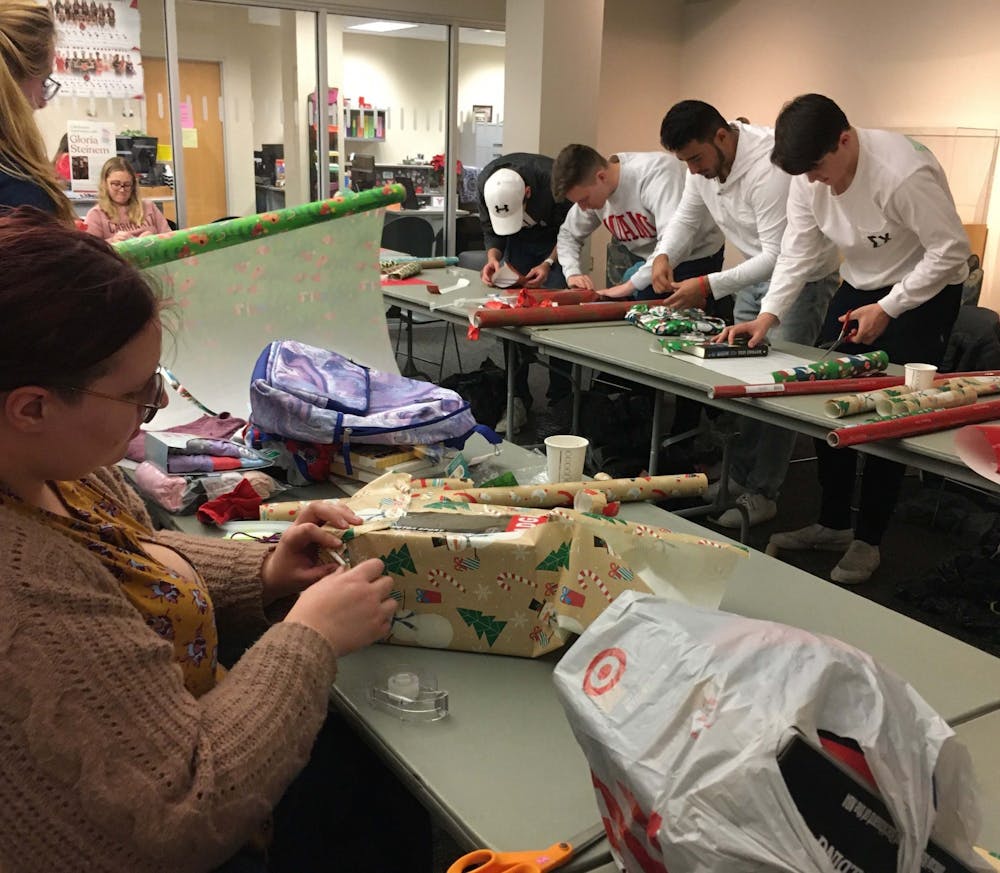In comparison to the rest of the world, the U.S. is the fourth-ranked country for the highest percentage of people who give their time and money during the year, according to the CAF World Giving Index from 2018.
Last year was also the second time in history, according to Giving USA, the U.S. crossed the $400 billion mark for charitable giving with a total of more than $427 billion.
There can be many reasons why people have felt compelled to continue donating more and more funds, but Leslie Lenkowsky, professor of public and environmental affairs at IUPUI, said it is typically personal.
“People feel good when they are helping other people feel good, but giving can also give them a sense of identification,” Lenkowsky said. “If their family receives help from a charity, they are most likely to give back to that charity. Or if their friends are volunteering with an organization, they are more likely to join.”
Even though there are donating opportunities throughout the year, many more giving programs arise during the holiday season including the Salvation Army’s Angel Tree and Toys for Tots.
“All of the major religious traditions emphasize giving during this time of year, and they have been recurring for hundreds of years,” Lenkowsky said. “Charities also tend to do more fundraising at this time of year because they know people will respond. At the end of the year, most people begin to realize that they did better than they thought with money that year, so they have the funds to give a little bit more.”
When choosing which organizations to donate time and money to, it has been found that each age group has different preferences. Millennials — 22-37 year olds — contribute more to work-sponsored initiatives and online fundraisers, Generation Xers — 38-53 year olds — often fundraise on their own for a cause or organization and Baby Boomers — 54-72 year olds — make recurring donations to the same event or organization, according to Nonprofits Source, an online marketing agency for nonprofits.
In 2001, Lenkowsky joined Americorps — a voluntary civil society supported by the U.S. government — under President George Bush and helped create the first survey of volunteering. When the first results were collected in 2003, the rate of volunteering was lower for 18-25 year olds than for any other age group.
“Young people have not yet developed the habit of volunteering,” Lenkowsky said. “But we did find that people who went to college are more likely to volunteer than those who didn’t. We also found that after someone reaches the age of 30, they start to become more active in volunteering because they are getting married and getting more connected in their communities than they may have been before.”
For Ball State junior English major Kennedy Row, giving is an emotional act because she “wants to bless other families and shine the light of Jesus.”
Each year, her family helps make Christmas dinner boxes filled with ham, canned goods and rolls for low-income families in her town.
“I try to give year round, but Christmas is the only time I don’t give monetarily,” Row said. “Giving makes me feel good because I know I’m making a small difference, not just with what I’m giving, but also with the time I spend actually talking with these people.”
Row said she continues to fill the dinner boxes with her family because they have done so since she was a kid, but for students who aren’t sure how to volunteer, Ball State offers many opportunities for holiday giving including the Student Voluntary Services’ (SVS) version of Angel Tree.
Within SVS’s program, students can choose to donate either their time or their money by sponsoring a child with a gift or helping wrap all of the donations that are received.
Ball State also offers programs for those who have the funds to donate. During the 2019 fiscal giving year — donations given between July 1, 2018, and June 30, 2019 — more than 24,000 people gave a monetary gift to Ball State, 1,000 of which were faculty and staff members, according to Lola Mauer, associate vice president of strategy & advancement services for the Ball State Foundation.
Overall, many people give because it makes them feel like they have done their part and done what they could to give back to the community, Mauer said.
“I think in essence alumni and friends give to Ball State because they believe in making an investment in their classmates and students,” Mauer said. “The university is one to watch; we are consistently graduating scholars who change their communities and the world.
“I believe in giving back to Ball State because Ball State gave so much to me, and I want to ensure students have those same (and better) opportunities. I see the impact of my gift every day in the faces of the students and in how much Ball State shines on a global scale. I’m proud to be a Cardinal.”
Contact Tier Morrow with comments at tkmorrow@bsu.edu or on Twitter @tiermorrow.





